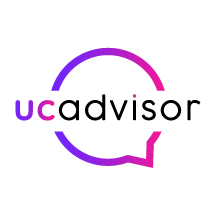
15 Jul X Essential Investments for the Future of Hybrid Work
The age of hybrid work is here, and it’s time for companies to make the transition.
The question for most companies isn’t “whether” to update their workplace schedule. Instead, most business leaders are rushing to figure out which kinds of new technology they need to empower the new “modern” team.
Following a shaky 2020, we’ve uncovered a new mode of working which seems to deliver better outcomes to everyone: customers, employees, and business leaders alike. Around 92% of people now expect to work from home at least once per week, while 80% expect to be working from home around 3 times per week.
However, just like any massive transformation, the transition to this new future will require careful planning, and even more cautious investment.
Today, we’re going to look at some of the essential investments’ companies need to make to prepare for the future of hybrid work. We’ll also be sharing some top tips on how you can boost your chances of picking the right providers for your new tech.
The Age of Hybrid Work is Here
A Gartner study in 2020 found that around 82% of company leaders are planning to let their employees work remotely some of the time, even after the pandemic is officially “over”. During 2020, the sudden rise of the global COVID threat meant most companies had to shift to at least some form of remote working strategy. Those who couldn’t make the shift to cloud were left closing their doors.
Although the initial transition to remote and distance working was difficult for some companies to handle, the initial teething pains did eventually give way to a series of benefits. We found we were suddenly able to work more efficiently without the distractions of the office, and employees felt higher levels of job satisfaction with no annoying commute to worry about.
Of course, there were downsides to remote work too. Employees suffered from feelings of isolation, and some team members simply couldn’t perform crucial in-house tasks from a remote destination.
This is why companies are now focusing on “hybrid” work, to bring the best of both worlds together. With hybrid working models, companies can create the perfect blend of remote and in-office employees for productivity, efficiency, and growth.
All it takes is the right plan, and the right tech.
3Pillars of your Hybrid Work Strategy
The exact strategy you build for hybrid work will depend heavily on your team and its unique needs. However, most companies are starting with a focus on these three pillars:
- UCaaS (Internal Communication)
- CCaaS (Customer service)
- Collaboration
A Scalable, Remote Workforce
Perhaps the biggest benefit of UCaaS in the modern workplace, is its ability to ensure a consistently scalable, and adaptable workforce for people working from anywhere. Before the lockdowns, only around 4% of people could say they regularly worked from home. Now, studies from Gartner indicate that 74% of companies are planning on permanently shifting to a remote work model after COVID. With UCaaS solutions, companies can finally empower their teams to work just as effectively at home as they do from the office.
This ensures that companies can leverage all the benefits of a remote workforce, from reduced overheads to higher employee satisfaction. What’s more, the ability to switch to a remote workforce will lead to incredible opportunities for business continuity. In a volatile and uncertain environment, businesses will now be ready for any eventuality. One study from PwC found that around 73% of CFOs believe work flexibility will be crucial to preparing for future events that cause disruption.
Pillar 1: UCaaS (Unified Communications as a Service)
While the demand for UCaaS technology has been increasing drastically in the last few years, it’s more crucial today than ever. Since the pandemic, interest in UCaaS technology has increased drastically, as companies know that they need to keep communication flowing to run an effective hybrid team. UCaaS offerings allow you to take your unified communications environments into the cloud, complete with global numbers, call recording, and other essential features.
UCaaS gives you the freedom to expand your service at the pace that suits you, with all the tools you need to deliver an excellent calling experience to your teams. You can integrate calendaring systems with your UCaaS solutions to help people track calls and interact with internal employees. UCaaS solutions can also come with intelligent call forwarding systems which automatically deliver a call to a mobile device when someone isn’t at their desk phone.
Some companies are even experimenting with building their UCaaS services on top of a collaboration environment like Microsoft Teams so that they can have all of their communication stack in the same aligned environment. Features to look for in UCaaS tools for hybrid work include:
- Seamless, connected functionality: Unified Communication allows businesses to build a single pain of glass environment for all interactions between members of staff, as well as other business telephony requirements. With a single, unified environment, you can easily improve productivity in a hybrid workforce and even build in the right security measures for peace of mind.
- Excellent security and data management: It’s much easier to keep your system secure when your IT team only has one environment to track for any signs of breaches and communications issues. You can also work alongside dedicated hosting providers to ensure that you keep your communications data in the right location, for specific data residency requirements.
- Data analytics and insights: Having all of your information and conversations located in the same environment also makes it easier to get an end-to-end view of your communication stack. Collecting information from a unified communications environment can help you to spot trends in business processes and unlock insights into potential opportunities for growth. You might even see the bottlenecks holding your company back.
- Excellent reliability: Great UCaaS solutions come with a range of network performance enhancements to give you excellent peace of mind. Most of the solutions available for today’s hybrid teams come with access to a wide range of failover solutions and backups, to ensure that if you ever lose access to a connection, you’ll get back up and running quickly. Make sure you check for SLA agreements with your UCaaS vendor.
- Flexible integrations: As companies continue to move away from the one-size-fits-all communication environment, UCaaS vendors are becoming increasingly flexible. The modern UCaaS environment can be adapted and upgraded to suit the needs of any business. You could work with a development team to bring unique integrations into your UCaaS space, or experiment with things like APIs and CPaaS (Communications Platforms as a Service)
Pillar 2: Contact Centre Or Customer Service (CCaaS)
Next, it’s important to ensure you can continue to serve and support your customers in a hybrid environment. This means investing in CCaaS technology or contact centre as a service tools. Cloud-based CCaaS systems will supply your employees and agents with all of the contact centre technology they need in an easy-to-use environment.
The best solutions are omnichannel creations which pull all of the features of a contact centre together in a shared environment, for ease of use. These tools will allow agents to track things like customer calls, video chats, messages, and other sources of information, without having to switch between tabs. Many of the top solutions will also integrate with the common customer service tools your agents use every day, such as your CRM system, or service and ticket management tools.
An incredible CCaaS solution should include:
- Scalable technology: Ensure you can easily scale the number of licenses in your contact centre up and down to suit the changes in customer demand. A good CCaaS offering will come with access to an online portal where you can add features and numbers, or even expand your contact centre to cover new territories.
- Workforce management: Most contact centre or CCaaS solutions now come with some aspect of workforce management to help you keep your employees optimised. This might include tracking tools to help you keep an eye on important business metrics, as well as tools to assign specific calls to certain employees, routing systems, and more.
- Analytics and insights: An ideal CCaaS solution for the age of hybrid work will make it easier to track all of your conversations with customers and glean insights from those discussions. You can use analytics systems to track essential metrics like customer satisfaction score or NPS. You can also unlock various AI solutions today to track things like customer sentiment, or access intelligent insights into your audience.
- Integrations: As mentioned above, CCaaS solutions are often most effective when they work alongside the other tools your hybrid workforce already uses. Integrations with CRM systems, ERP tools, workforce optimisation systems, and collaboration tools are often helpful. You may even go the extra mile and connect your UCaaS and CCaaS service.
Pillar 3: Collaboration
Teams still need to work in unison – even when they’re not located in the same place. The good news is cloud connectivity, and the internet has made collaboration on a global scale possible.
Today’s team members can access collaborative tools often as part of a comprehensive UCaaS (Unified Communications as a Service) system. Collaboration is now the new “C” of UC(&C), promising various ways to bring people together on projects, topics, and ideas.
The best selection of collaboration tools will provide a streamlined environment where people in your team can share ideas and have consistent conversations. Most of the best solutions include:
- Chat: Chat and messaging are common features in the modern work environment. People are used to being able to connect through social media messenger, online services like Slack, and more. Chat solutions should come with 1:1 messaging, group channels for sharing ideas in quick-fire conversations, and threads. It’s also worth looking for things like GIFs, link sending options, and so on to make chatting easier.
- Audio conferencing: Audio conferencing is an excellent alternative to a phone call when users need to find contact information and reach out quickly. Make sure that you have a strong UCaaS provider in-mind who can offer excellent audio-conferencing capabilities for your team. This should include both group and one-on-one conferencing.
- Video conferencing: Video conferencing is the next step up from audio conferencing, bringing you face-to-face with your team. Video saw a massive increase during the pandemic, thanks to its ability to replicate some of the aspects of in-person conversations. Video will continue to show a lot of value in the age of hybrid work, allowing people to bring contextual information like body language and facial expressions into a conversation.
- File and screen sharing: Speaking of context, a good collaboration tool should make it quick and easy to share all kinds of information over the cloud. Make sure that you have access to a convenient way of sharing information by dragging and dropping or uploading files. If you are going to be sharing screens, your users should have the option to choose between sharing the whole screen or just a fragment. All screen and file-sharing services must be secured and remain private for your users.
- Room booking systems: These will enable more effective collaboration between in-office and remote employees, by ensuring your team can book meetings with their colleagues.
Ideally, any meeting rooms you have in place will be easy-to-use, convenient, and ready to go in a matter of minutes. One study found that over 50% of video conferencing users today wait more than 10 minutes for a meeting to be fully setup.
Investing in Technology for the Future of Hybrid Work
The three pillars above represent a valuable starting point for anyone investing in a future of hybrid work. However, it’s worth remembering that your needs might differ depending on the nature of your business. There are also countless other tools out there beyond the ones we mentioned above which may make certain aspects of hybrid working easier to adopt.
For instance, training tools and webinars which teach modern managers how to use analytics services and dashboards to track hybrid work performance could be helpful for the new age of team management. CPaaS solutions and APIs are becoming more valuable to companies who want the freedom to create their own custom communication and contact centre environments. Thanks to low-code and no-code spaces, anyone can design the perfect service today.
On top of that, for forward-thinking companies, there’s also the option to embrace concepts like automation and AI on a deeper level. Rather than just using AI for automatic routing in the contact centre, you could also embed it in your UCaaS and collaboration environments to help employees to arrange meetings more effectively and track valuable information in a hurry.
If you’re beginning to plan your hybrid working model, now could be the perfect time to sit down and ask yourself which kinds of technology are most likely to solve the problems your hybrid workers might face. Then, come back to us for help choosing the ultimate UCaaS, CCaaS, and collaboration vendors for your needs.



